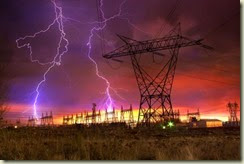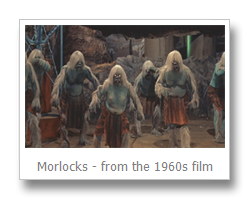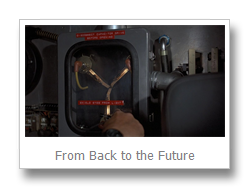 Michael Solana has an article in Wired that tackles the trend in fiction, especially science fiction, toward dystopia. He contrasts the hopeful, forward-looking science fiction of an earlier day to the current interest in zombies and hellscapes. This is his view of the earlier period:
Michael Solana has an article in Wired that tackles the trend in fiction, especially science fiction, toward dystopia. He contrasts the hopeful, forward-looking science fiction of an earlier day to the current interest in zombies and hellscapes. This is his view of the earlier period:
Simon Lake—American mechanical engineer, naval architect, and perhaps the most important mind behind the development of the submarine—said of Twenty Thousand Leagues Under the Sea, “Jules Verne was in a sense the director-general of my life.”
He offers Arthur C. Clarke, Gene Roddenberry and even Jonathan Swift as examples of forward looking authors. Of course, H.G. Wells was pretty good at creating man- or alien-created heaps of rubble – see the Shape of Things to Come or War of the Worlds – and one of Swift’s most famous pieces involves cannibalism. Let’s not even get into the Morlocks and Eloi.
The author does allow that dystopia has always been an element in science fiction. His point is that it has now overwhelmed everything else.
Once a literary niche within a niche, mankind is now destroyed with clockwork regularity by nuclear weapons, computers gone rogue, nanotechnology, and man-made viruses in the pages of what was once our true north; we have plague and we have zombies and we have zombie plague.
Here’s a Time top 10 of post-apocalyptic novels, which includes books from as far back as 1951 (Day of the Triffids).
Interestingly, Solana does not include domestic nuclear energy as a
dystopia motivator and I’d venture that nuclear war doesn’t have the cache it had during the cold war – On the Beach, Five, etc.And that’s when he gets to his prescription:
Luddites have challenged progress at every crux point in human history. The only thing new is now they’re in vogue, and all our icons are iconoclasts. So it follows here that optimism is the new subversion. It’s daring to care. The time is fit for us to dream again.
This seems to me a very straitened view of the fictional landscape – he uses The Hunger Games and The Road as his examples of modern dystopia – and while some such works are cynical, others use their awful future worlds to show how humans prevail over adversity, a perennial theme. Fiction needs conflict, of course. Even when scientific advance is shown as a potential good – from Frankenstein to 2001 to Minority Report - technology introduces unintended consequences. It’s as old an idea as technology itself.
Nuclear energy has generally done fairly well in this formulation – aside from the video games series Fallout. Back to the Future uses it for time travel and the water fission project in Chain Reaction would be a boon if Morgan Freeman weren’t so evil. True, Chernobyl Diaries imagines mutated things with a taste for foolish young adults, but Cloud Atlas teases an evil nuclear energy facility only to make the real villain threatened big oil. Even in the fifties, radioactively derived creatures were joined by medical mishaps and alien invasions to provide thrills.
So, I don’t know. I guess I don’t agree with Solana’s article, though I appreciate his preference for optimism. It might just be that he’s ready for a new pop paradigm. A few years ago, Solana might have zeroed in on vampires – today, it’s dystopia. Too much can be too much – consider it the workings of the market combined with what’s plucked out of the cultural ether. One usually has only to wait for a fad to die out. This ruined world too shall pass.
But read it and see what you think. For those interested in a more positive view of science and nuclear science in particular, what would be some fictional exemplars? I brought up a few from the movie world, but what about novels? plays? operas?



Comments
The book is about a prepper (someone who stores food, guns, books, etc) in case society as we know it comes to an end.
Act 1
Story of struggle to convince spouse and collect materials.
Act 2
The EVENT happens (EMF, virus, whatever)
Get the family together (much action here)
Protect the stuff from the neighbors
Act 3
Need to band together - but with whom?
Friend invites family to come with him to the local nuclear power plant
Reasons this is a great idea
Secure perimeter
Large diesel generators
Turbine hall great for indoor living in winter
Engineer invents heating system using latent radiation heat source
Act 4
Plant reactivated and community restored
All is good again.
The end
James Greenidge
Queens NY